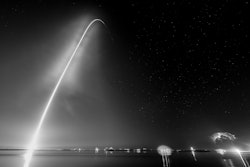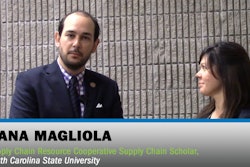BOX ON OPENING PAGE:
Challenge
- Hundreds of millions of documents, reports, and project data spread across multiple locations and departments
- Poor visibility to engineering data sources
- When in doubt, engineers used Google for research
Solution
- IHS Product Design
with IHS Goldfire®
Results
- Time spent researching specific project data reduced to hours versus days
- Quick access to contextually relevant results
- Ability to leverage enterprise-wide data, information, and lessons learned.
START OF ARTICLE
During any given year, hundreds of millions of different documents, reports, project data, lessons learned, scientific research and IT logs are created and accessed by NASA’s nationwide research centers and test facilities. Growing in terms of variety, velocity, volume and value, the data is largely unstructured and difficult to locate and share among the government agency’s many different departments.
Improving Identification and Prioritization of Data
Limited visibility of organization-wide data is an ongoing hurdle for NASA, which runs multiple research centers, test facilities, flight centers and institutes in the United States.
“We are losing vast amounts of critical data,” says David Meza, chief knowledge architect at NASA Johnson Space Center. In many cases, this data loss pushed engineers to use Google as a primary research tool—a fallback that leads to even deeper challenges for the government agency.
“Like many other search engines, Google parses out keywords and phrases. If a page isn’t ranked high, Google won’t even return it as a result,” Meza explains. “We needed a better way.” To improve identification and prioritization of its data across various repositories, uses and interactions, NASA reviewed an array of technologies and solutions on the market including semantic search, faceted search, computational and cognitive systems, natural language queries and more to get a good understanding of how NASA data worked with those different search methods.
In the end, NASA turned to IHS Goldfire, the platform for technical knowledge discovery and problem solving, as it best met NASA’s requirements for semantic search, clustering of topics, faceting, the ability to save searches, and the ability to create automated alerts around save queries. In addition, IHS Goldfire gave NASA engineers and researchers the ability to search specific repositories. This was critical because up to 80 percent of the time NASA personnel knew where information resided, but it was hidden within millions of documents and thus not readily available.
The platform proved its value almost immediately when the Orion program experienced a partial failure of the uprighting landing system in a test flight. The NASA engineering team reviewed past Apollo documents to study their design and approaches to find solutions to improve the current Orion design. In the past, a librarian would spend an entire day researching the Johnson Space Center (JSC) History Index and Archive Search Index databases for the documents—plus hundreds of JSC oral histories and scanned historical documents dozens of pages each—in hopes of finding relevant information.
Tracking Immediate Results
Using IHS Goldfire’s advanced search tool, NASA indexed 62GB (representing over 1.2 million pages) of historical documents and websites, thus enabling a full-text search across all of the information. The platform also analyzed the results for relevance (i.e., proximity in the document and context). By clicking a link, users can read a summary, view a list of similar documents, and/or access the document immediately.
The Orion engineer spent three hours using IHS Goldfire to run some of the same searches that were previously completed on the indexed documents with the Windows search option. For example, after a single search using just one search term, IHS Goldfire returned more than 200 contextually relevant documents—some of these dated back to more than 40 years.
“IHS Goldfire returned the results instantly,” said Meza, “compared to a preliminary search, which took eight hours to complete—plus another four hours to review—and that turned up very few useful documents.”
Using IHS Goldfire, the Orion engineer immediately found hundreds of contextually relevant results on the Apollo program and nine of these results are now being reviewed for their contribution to savings and improvements in the Orion program.
Leveraging Past Lessons for Today’s Problem Solving
By empowering informed decision-making and leveraging lessons of the past, IHS Goldfire has helped minimize waste, rework, reinvention and redundancy at one of the world’s largest government agencies.
“The engineer was astounded because he didn’t have to spend hours reading through volumes of information,” says Meza. “He was able to access good, relevant information that dug down deep and focused only on what was useful. That’s invaluable.”
Pull-out quote:
"Engineers don’t reuse information because it’s difficult for them to find it. If they could find it in a couple hours instead of a couple weeks they would. Otherwise they are going to have to recreate it themselves."
David Meza
Chief Knowledge Architect
NASA Johnson Space Center



















